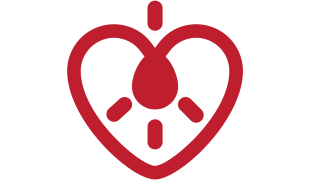- 9995
- 662
- 10
- 12
- 0
- Help Ukraine
About the solution
Brody Moreland was born with spina bifida, a birth defect that occurs when a baby’s spine doesn't form normally in the womb. After doctors discovered the condition 20 weeks into Ally Moreland’s pregnancy, they gave the couple a 50/50 chance that their firstborn would be able to walk. Right after birth, Brody underwent back closure surgery and skull surgery to drain extra fluid from his brain. Four more surgeries followed in the next six months. "But his mobility didn’t improve: He’s basically paralyzed from the chest down", Taylor said. He has arm control, but no trunk control.
“At first, I thought so negatively about all the things that he wouldn’t be able to do. That’s kind of where your mind goes,” Taylor recalled.
As Brody grew, playtime meant spending time on his belly on the floor. He pushed up with his arms, but couldn’t crawl, so he’d stay in exactly the same place where his parents placed him. When Brody turned 1, the family tried a ZipZac baby wheelchair, which he took well, but it still wasn’t a solution since he couldn’t easily reach the ground where his toys were. It was important that Brody be able to crawl and play on the floor, just like other toddlers. It was just a matter of finding a way.
That is when Taylor created “The Frog,” a homemade device that helped Brody get around on his own. It supports his body with the help of large wheels placed near his hips. It tilts up and down so he has to carry some weight in his arms just like any other baby would when crawling. When he’s tired, he can comfortably rest his head on the floor. The large wheels mean he can easily roll through carpet or over a transition in a doorway. It promotes increased shoulder strength and stability, plus increased head and trunk control, she noted. It also boosts visual perceptual skills and cognitive skills.
The device has been “life-changing” for Brody, his parents said. He can chase the cat, open drawers, play with his cousins, explore on his own and “be crazy like any toddler should be,” his mom noted.
The device is an excellent idea, said Elizabeth A. Fain, director of occupational therapy at Pfeiffer University in Misenheimer, North Carolina, who was not involved in its design and offered an independent opinion.
The family now wants to share it with the world. The inventor has now produced Frog devices for 20 kids and there’s a growing waiting list of orders.
Adapted from: https://on.today.com/2GfykTH
This solution shall not include mention to the use of drugs, chemicals or biologicals (including food); invasive devices; offensive, commercial or inherently dangerous content. This solution was not medically validated. Proceed with caution! If you have any doubts, please consult with a health professional.
DISCLAIMER: This story was written by someone who is not the author of the solution, therefore please be advised that, although it was written with the utmost respect for the innovation and the innovator, there can be some incorrect statements. If you find any errors please contact the patient Innovation team via info@patient-innovation.com
-
-
329
-
0
-
3424

Student invents device to help with arm mobility
BODY BALANCE: Maintaining body balance
CAREGIVING
Bone Disorders (Decalcification, Bone Deformity, Bone Fracture, Bone Infection)
Gastrointestinal Bleeding
Assistive Daily Life Device (to help ADL)
Limited range of motion
Reduced grip force (grip)
Loss of muscle coordination
Joint deformity
Swelling or inflammation
Blood in the stool (hematochezia)
Restoring mobility
Maintaining Balance and Mobility
Preventing (Vaccination, Protection, Falls, Research/Mapping)
Caregiving Support
Cardiology
Clinical Hematology
Infectious Diseases
Medical Genetics
Orthopedics
Pediatrics
United States
-
-
-
351
-
0
-
4295

Collaborator Pierluigi Mantovani creates Evolution Devices - solutions that aim to transform Multiple Sclerosis Management
CAREGIVING
BODY BALANCE: Maintaining body balance
STANDING UP: Standing up from a seated position
WALKING: Walking
Multiple Sclerosis
Assistive Daily Life Device (to help ADL)
Walking Aid (wheelchair/walker/crutches)
App (Including when connected with wearable)
AI algorithm
Body-Worn solutions (Clothing, accessories, shoes, sensors...)
Restoring mobility
Regaining sensory function
Managing pain
Promoting self-management
Preserving Organ Function
Managing Neurological Disorders
Maintaining Balance and Mobility
To improve Treatment/Therapy
Preventing (Vaccination, Protection, Falls, Research/Mapping)
Raise awareness
Caregiving Support
General and Family Medicine
Internal Medicine
Medical Genetics
Neurology
Physical Medicine and Rehabilitation
United States
-
-
-
223
-
0
-
2209

Adapted and high mirror toys to encourage her daughter to put
CAREGIVING
(SELF)-CARE: GROOMING: Personal grooming, such as combing hair or shaving
STANDING UP: Standing up from a seated position
Cri du Chat Syndrome
Strategy/Tip
Restoring mobility
Promoting self-management
Preserving Organ Function
Managing Neurological Disorders
Promoting inclusivity and social integration
Maintaining Balance and Mobility
Restoring Blood Circulation
Preventing (Vaccination, Protection, Falls, Research/Mapping)
Raise awareness
Caregiving Support
Child and Adolescent Psychiatry
General and Family Medicine
Neurology
Pediatrics
Physical Medicine and Rehabilitation
Portugal
-
 en
en